



















| |

Buddhist symbols
The meaning of
the Buddhism Symbols.
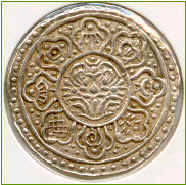
Rhodes class Dii/ KM y13.2
A distinctive feature of the Ga-den
Thangka is the wide variations in attractive geometric patterns which you can
find on the obverse side of the coin. They are not, however, purely for artistic
effects but they are Hindu and Buddhist yantras. A yantra is a diagram and
consists of certain permanent elements. These elements have esoteric meanings.
On the Tangka you can find the following eight Buddhist emblems;
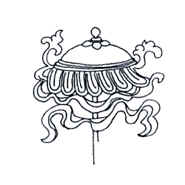
The Umbrella (Chattra)
Keeps away the heat of Evil desires. In
some parts of asia the Umbrella signifies royalty.

The Golden fish (Matsyayugma)
Is a symbol of happiness and utility. It
is also regarded as symbolizing the conscious being in the Ocean of Wordly
Exsistence.
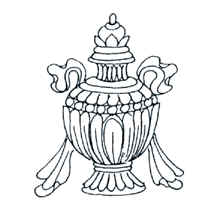
The holy Vase
(Kalasha)
May be regarded as full of Ambrosia and
so the source of all human joys. On the other hand, it is regarded as being full
of human desires and so the source of all Evil.
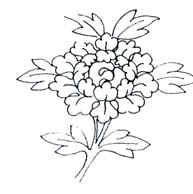
The Lotus (Padma)
Is a familiar object in Buddhist
religious art and indeed also in incartation to the Buddha calling on his aid in
combating Evil. It is regarded as a pledge of salvation, in the same way as the
cross is used in Christian art and also as a symbol of the Divine Origin of all
living beings on the wheel of live.
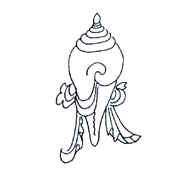
The Conch Shell
(Sankha)
Has many uses in symbolism. the Conch
Shell is regarded as the symbol of the blessedness reveived when a human turns
to the right. In Lamaistic iconography the Conch Shell is also used to symbolize
Vajratara and Ekajata, so its meaning on the Tibetan coin would vay according to
the background of the person holdong the coin.
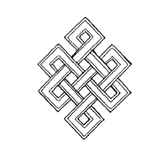
The Endless Knot
(Shrivasta)
Is a diagram which is found in many
other countries as well as Tibet and it is symbolic of the endless cycle of
rebirths.

The banner of Victory
(Dhvaja)
Signifies victory not in the material
but in the spiritual sense.
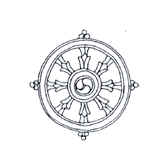
The Wheel of Law
(Dharmachakra)
The Wheel of Law or Wheel of Life, is a
frequent object on Tibetan Tangkas and religious banners. It signifies the path
to perfection. Iits eight spokes symbolize the eightfold path which leads from
the endless succession of lives and deaths to Nirvana.

|
 Hans Sanders (NL)
Hans Sanders (NL)